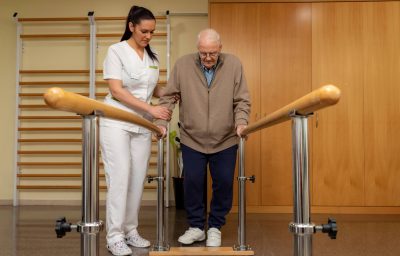
Youth with foster care involvement have an increased risk for mental health diagnoses, trauma and worse outcomes in adulthood than their peers. Research about how youth with disabilities, including autism and intellectual disability, interact with this system is lacking. Evidence for how youth with autism or intellectual disability in the foster care system access and use services is needed to advance ways to improve their outcomes.
Recently published in the Journal of the American Medical Association (JAMA) Pediatrics, researchers at Drexel University’s A.J. Drexel Autism Institute, in collaboration with George Mason University’s Department of Social Work and the University of North Carolina at Chapel Hill’s School of Social Work, engaged an intersectional analysis to examine foster care involvement among youth with intellectual and developmental disabilities (including autism) and how it has evolved in the United States using a cross-section of 2016 national Medicaid claims data.
In 2016, there were over 430,000 youth in the U.S. foster care system. The researchers found that the population of youth with intellectual and developmental disabilities in foster care had grown substantially to almost 40,000 – or nearly 9% – and the rates of autism and intellectual disability among youth in foster care were two to five times greater than the rates found in the general U.S. population. Among youth with intellectual and developmental disabilities, Black youth and female youth had a higher risk for foster care involvement compared to youth who were white or male. Risk for foster care involvement among youth with intellectual and developmental disabilities also increased with age.
“Understanding the involvement of youth with intellectual and developmental disabilities in the foster care system is an important first step in identifying priorities for needed policy and program change,” said Lindsay Shea, DrPH, associate professor and director of the Policy and Analytics Center at the Autism Institute, and lead author on this study. “Our collaborative team of public health, policy and social work experts sought to understand this group in the Medicaid system.”
The research team used the largest sources of Medicaid claims data to examine the entirety of the U.S. Medicaid system. Studying youth with intellectual and developmental disabilities in the foster care system in Medicaid is timely and important because Medicaid is the predominant insurer for youth with intellectual and developmental disabilities and youth in the foster care system. However, there may be barriers to how states connect services for youth with intellectual and developmental disabilities to the foster care system.
“This research centers around the experiences of an extremely vulnerable, and often invisible foster care youth. The first step to supporting these youth, is ensuring that their experiences are visible,” said Amy Blank Wilson, PhD, associate professor at the University of North Carolina at Chapel Hill and co-author of the study.
Research focused on autism is often limited to barriers in reaching marginalized groups, in part due to competing demands for families and individuals. The use of secondary data sources, such as Medicaid claims, presents an innovative opportunity to observe the experiences of people enrolled in the Medicaid system. In turn, this research presents news ways that policies or programs in Medicaid might be reorganized or connected, including bolstering supports for youth with intellectual and developmental disabilities in the foster care system.
“A strength of this work is in the important consideration of intersecting identities of race, ethnicity, gender, age and disability,” said Melissa L. Villodas, PhD, an assistant professor at George Mason University and co-author of the research. “The more we know about the unique challenges that are compounded by marginalization, the more responsive we can be in our efforts toward equitable policies and practices.”








